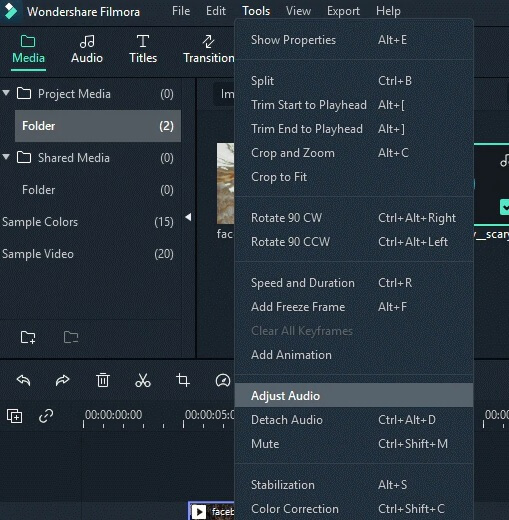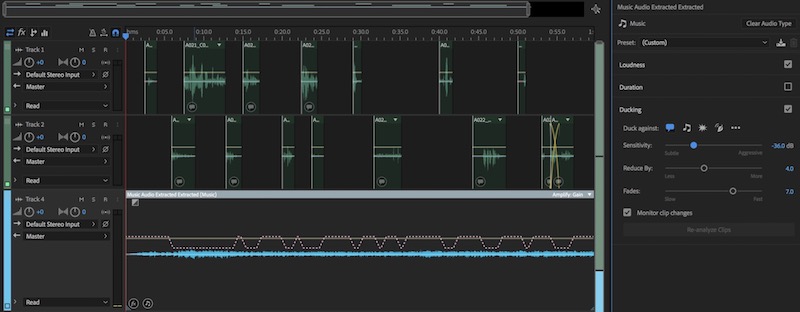


What’s EXTREMELY helpful about this new feature is that:

When you’ve adjusted these settings – and, in truth, I leave them at the defaults until I’ve made a first pass through this menu – click Generate Keyframes.Īlmost instantly, Premiere sets volume keyframes in your music that match these settings. The default is about 3/4 of a second, which I tend to like. This determines how quickly the music changes volume. A solo acoustic guitar requires less reduction than a heavy metal group. The default setting is -18 dB, but the actual setting varies depending upon how loud the music track is. This determines how much to reduce the volume of the music. This determines how loud the dialog tracks need to be in order to trigger a keyframe response in the music. Once ducking is enabled, you can make three adjustments: Select all the music clips, and assign them the Music category in the ESP just as we did with the Dialog clips earlier. Once I’ve defined the clips that make up all the dialog – and these clips can extend across multiple tracks – it’s time to adjust the music. Here’s a video that goes into more detail: /articles/adobe-audition-cc-the-new-essential-sound-panel/ The operation of the ESP is more than I have time for in this article. Nothing is permanent and all settings can be changed.

NOTE: However, behind the scenes, what the ESP is doing is applying standard audio filters and presets which can easily be changed by someone who knows how these filters work. This panel provides a great deal of control over the sound of our audio, without having to understand audio filters or technology. To start, select all the Dialog clips in a track, then click the Dialog text button in the Essential Sound Panel (ESP). What auto-ducking does is automatically apply keyframes to the clips in a track, based upon audio levels in one or more other tracks. If you know a technique, please share it in the Comments below.Īuto-ducking was added with this version of Premiere to the Essential Sound panel. NOTE: I wish Adobe made it easier to set a keyframe to 0 dB I spend way too much time dragging keyframes that get almost, but not quite, to 0. This technique works, we’ve used it for years, but it’s time-consuming and, if you need to make changes, it means you need to go back and adjust each keyframe. In the past, we would add audio keyframes to the music to adjust its volume during playback so that it is louder when there is no dialog and softer during the dialog. I’m just keeping this simple to start so you can see how it works. NOTE: As you’ll see below, this technique works with multiple clips across multiple tracks. The dialog track contains multiple clips in a single track, while the SFX and music tracks contain single clips. This dramatic scene has a dialog track, a ticking clock SFX track and music track. Scene courtesy of John Putch “Route 30, Too!” ( Here’s a typical sequence that we can use to illustrate this feature.
Adobe premiere 7.0 sound ducking pro#
This year, in the April, 2018, update, Adobe Premiere Pro CC added auto-ducking. The sound panel then moved into Premiere last spring, but auto-ducking wasn’t in it, yet. Auto-ducking first appeared as part of the Essential Sound Panel that was released in Adobe Audition two years ago.


 0 kommentar(er)
0 kommentar(er)
